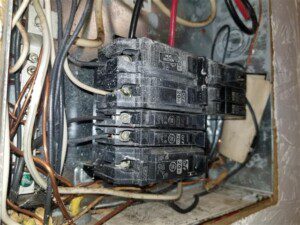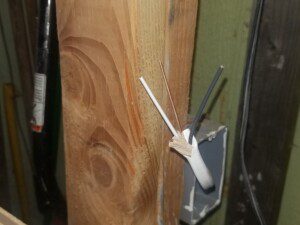When inspectors inspect electrical systems, they are looking for any installation errors, shock and fire hazards, and also labeling issues. Since electrical systems can cause injury or fire, making sure that all of the wiring and electrical panels in a home is very important, and this is why home inspectors take special care to identify any defects in the electrical system.

A common labeling issue found in residential electrical systems is improperly labeled white conductors that are being used as hot conductors. So what exactly does that mean? This article will break down why white conductors that are being used as hot conductors should be properly labeled.
In most modern residential buildings, electrical system installers use non-metallic sheathed cables to distribute power throughout the home. Non-metallic sheathed cables typically consist of three separate wires that are protected by a non-metallic sheathing. Two of the wires inside the sheathing have an additional non-conductive layer of material around them, which is usually colored black or white. The third wire is usually bare copper, which is the grounding conductor. In residential electrical systems, wires use a color code so that they can be properly identified. Black is for “hot” wires, which supplies electrical current, and white is for “neutral” wires, which are meant to allow current to flow back to the electrical panel to complete the circuit.

Current building standards now requires four wire cables for 240 volt circuits, and in this case there are three insulated wires, colored black, red, and white. Black and red are “hot” and white is “neutral”. But in older systems, 240 volt circuits may only have three wires and the white wire is used as a “hot’ conductor.
When a white wire is used as a “hot” conductor, it should be labeled as such on both ends of the wire, so that any technician working on the wiring can properly identify the wires that are “hot”. When inspectors inspect electrical panels, they will often notify the client if white wires that are being used as hot conductors are not properly labeled as such. Usually installers will mark the white wire with red or black marker or tape to properly identify the circuits.
Proper labeling of electrical systems is very important to protect technicians and electricians. An improperly labeled electrical system should be further evaluated and properly labeled by a licensed electrical contractor.
Check out the video below to learn more about hot and neutral wiring in residential electrical systems:
